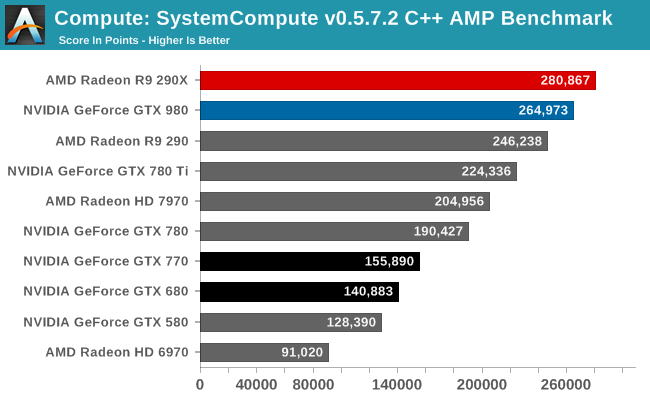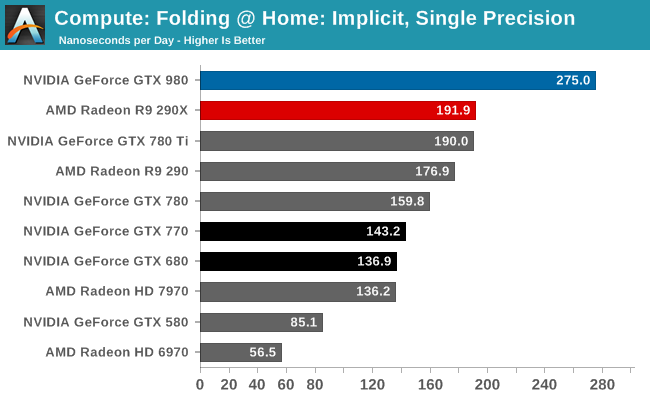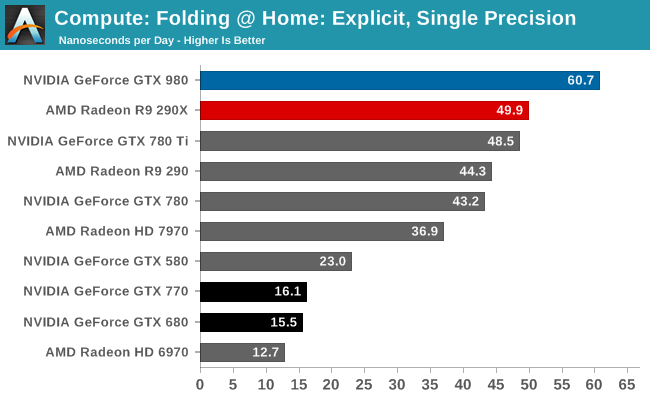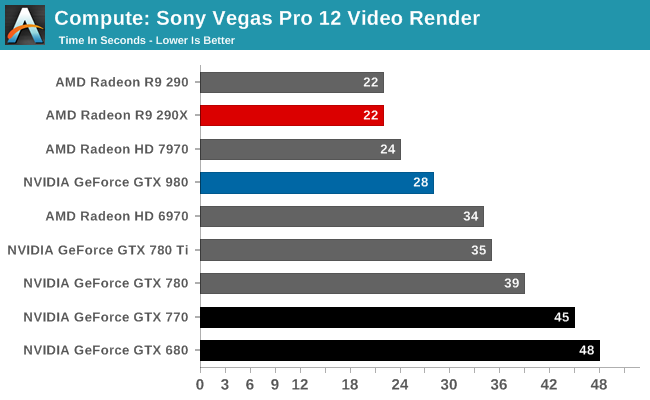Glo.
Diamond Member
- Apr 25, 2015
- 5,930
- 4,991
- 136
So how come 2048 CUDA core GTX 980 with 4.2 TFLOPs of compute power, was faster or on par with 2880 CUDA core 5.5 TFLOPs GTX 780 Ti in compute oriented workloads?That really doesn't add up.
The performance Delta Between Fiji and Vega FE in workstation benchmarks, are exactly like the performance deltas between Normal and "pro" AMD drivers.
There are two possibilities.
A) Vega FE effectively has Pro drivers, even if they are unsigned.
B) Vega FE has such radically different HW that it behaves just like is has Pro drivers without them.
Occam's razor says A) is the most likely solution (Being simple and straightforward).
B) is unlikely in the extreme. What do you think will happen when Vega FE gets "real" Pro drivers will it get the same kind of boost that Pro drivers give on top of the ones we see here. So the SNX-02 benchmark will go from 5 Times faster and get another 5 X boost and be 25 times faster?
No. AMD is selling this card as a Workstation card, and they gave it Workstations drivers that boost those workstation benchmarks, just like their Pro drivers do.
Thinking that the Workstation benchmarks represent an enormous HW boost over Fiji is just wishful thinking, leading you away from the obvious answer: It's just Workstation drivers.
http://www.anandtech.com/show/8526/nvidia-geforce-gtx-980-review/20




Kepler had 256 KB registry File size available to 192 CUDA cores in each SM.
Maxwell has 256 KB Registry File size available to just 128 CUDA cores in each SM.
In essence, those 128 CUDA cores in Maxwell had 100% of performance of 192 CUDA cores from Kepler.
This is definition of throughput of GPU. This change affected not only gaming performance of the GPU but also compute performance. Nvidia essentially increased throughput of the GPU by making it less starved for resources.
As for Vega vs Fiji. Increase in throughput of the GPU you can achieve just by increasing the cache size versus previous version of GCN. Polaris increased L2 cache 4 times compared to previous versions of GCN, including Fiji, which was reflected in gaming benchmarks. What you see in the benchmarks quoted, by Gamers Nexus is the difference of increased throughput of GPU. If AMD changed the way GPU handles Registy Files, and increased size of them - you should also see reflection of this in the applications you use. Most likely - this is the reason why Vega is per clock faster than Fiji, and why AMD touted that it has higher IPC compared to previous generations of GCN.
In sheer compute throughput, Vega will be on par with Volta and GP100 chip.
Vega does not have signed professional drivers. Whole point of professional drivers is signing them. They are heavily optimized much more than consumer drivers. That is the reason why you pay 4000$ for essentially GTX 1080 with different name, and different drivers. They are designed for highest reliability and compute performance.


